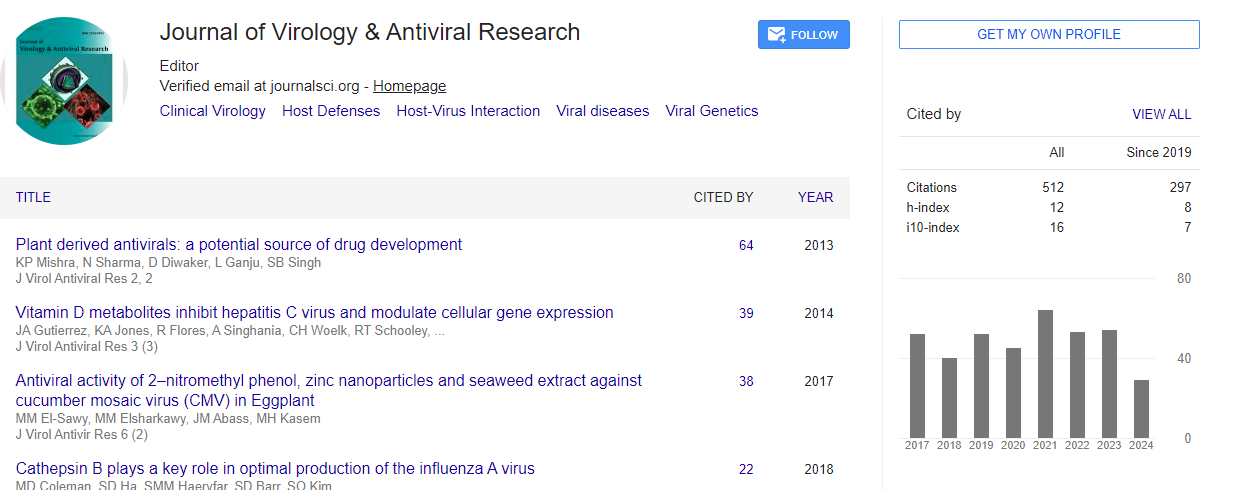Opinion Article, J Virol Antivir Res Vol: 12 Issue: 1
Different Types of Hepatitis their Transmission and Prevention
Crabb Hoepelman*
1Department of Medicine, Indiana University, School of Medicine, Indianapolis, United States of America
*Corresponding Author: Crabb Hoepelman
Department of Medicine, Indiana
University, School of Medicine, Indianapolis, United States of America
E-mail: crabbhoepe@iu.edu
Received date: 14 February, 2023; Manuscript No. JVA-23-93054;
Editor assigned date: 17 February, 2023; PreQC No. JVA-23-93054 (PQ);
Reviewed date: 03 March, 2023; QC No. JVA-23-93054;
Revised date: 10 March, 2023; Manuscript No. JVA-23-93054 (R);
Published date: 17 March, 2023; DOI: 10.4172/2324-8955.1000668
Citation: Hoepelman C (2023) Different Types of Hepatitis their Transmission and Prevention. J Virol Antivir Res 12:1.
Description
Hepatitis is an inflammation of the liver that can be caused by a variety of factors, including viruses, alcohol consumption, and certain medications or toxins. There are five main types of hepatitis, each with different causes, symptoms, and treatments: hepatitis A, B, C, D, and E, the hepatitis is focused on the types, their transmission, and the ways to prevent them.
Hepatitis A
Hepatitis A is caused by the Hepatitis A Virus (HAV) and is primarily spread through contaminated food or water, or close contact with an infected person. Symptoms may include fatigue, nausea, fever, and jaundice (yellowing of the skin and eyes). Hepatitis A is typically a short-term illness that does not result in chronic infection, and it can be prevented by practicing good hygiene, getting vaccinated, and avoiding risky foods and beverages.
Hepatitis B, C and D
Hepatitis B is caused by Hepatitis B Virus (HBV), Hepatitis C by Hepatitis C Virus (HCV). Hepatitis D is caused by the Hepatitis D Virus (HDV) and can only occur in people who are already infected with hepatitis B, which are primarily spread through blood or bodily fluids, such as during sexual contact, sharing needles, or from mother to child during childbirth. Symptoms may include fatigue, nausea, fever, and jaundice, but many people with hepatitis B, C and D do not show any symptoms at all. Hepatitis B, C and D can result in chronic infection, which can lead to serious liver damage and even liver cancer. Hepatitis B, C and D can be prevented with a vaccine, practicing safe sex, and avoiding sharing needles or other equipment, and getting tested for the virus if we are at risk.
Hepatitis E
Hepatitis E is caused by the Hepatitis E Virus (HEV) and is primarily spread through contaminated food or water, particularly in areas with poor sanitation. Symptoms may include fatigue, nausea, fever, and jaundice, and hepatitis E can also result in acute liver failure in rare cases. Hepatitis E is typically a short-term illness that does not result in chronic infection, and it can be prevented by practicing good hygiene, avoiding risky foods and beverages, and getting vaccinated if available.
Preventing Hepatitis
There are several ways to prevent hepatitis, depending on the type of virus. Vaccination is a highly effective way to prevent hepatitis A and B, and in some cases, hepatitis E. Practicing safe sex by using condoms can also help prevent the transmission of hepatitis B and C. Avoiding sharing needles or other equipment, particularly in the context of drug use, can help prevent the transmission of hepatitis B, C, and D.
Apart from these preventive measures, practicing good hygiene can also help prevent the spread of hepatitis A and E. This includes washing hands regularly with soap and water, particularly before eating or preparing food, after using the bathroom, and after changing diapers. It's also important to avoid risky foods and beverages, particularly when traveling to areas with poor sanitation, to reduce the risk of contracting hepatitis A and E.
Treatment for hepatitis varies depending on the type of virus and the severity of the infection. For acute hepatitis, which is a short-term infection, treatment typically involves rest, staying hydrated, and avoiding alcohol and certain medications that can further damage the liver. For chronic hepatitis, which is a long-term infection, treatment may involve antiviral medications, liver transplant, or other therapies to manage symptoms and prevent further liver damage.
Conclusion
Hepatitis is a serious condition that can have significant long-term health consequences if left untreated. By understanding the hepatitis, including the different types of viruses, how they are transmitted, and ways to prevent them, we can take steps to protect our health and reduce the risk of contracting the disease. If the suspect who may have been exposed to hepatitis or are experiencing symptoms of this disease, it's important to get tested and seek medical treatment as soon as possible. With early detection and proper management, most people with hepatitis can lead healthy, fulfilling lives.
 Spanish
Spanish  Chinese
Chinese  Russian
Russian  German
German  French
French  Japanese
Japanese  Portuguese
Portuguese  Hindi
Hindi 

